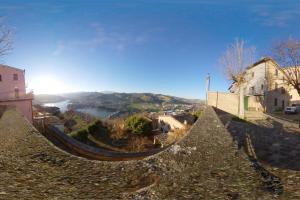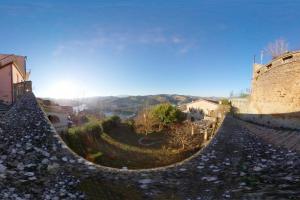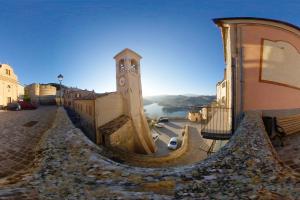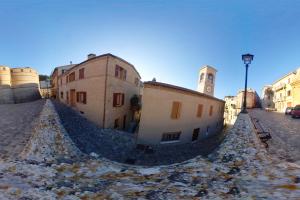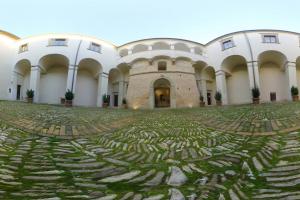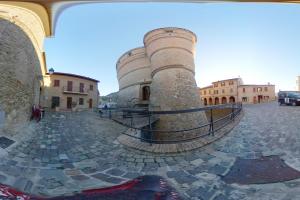Sassocorvaro
Primary tabs
Sassocorvaro
A bright green terrace that is reflected in the waters of an artificial lake. The natural outback of the Apennine hinterland, with the old town in the middle, gathered around its castle, above the great Colle Igea pine forest and down to the Mercatale lake. Sassocorvaro dominates the border between the higher and middle valleys.
Its origins date back to the tenth century, in the year 1060 the first fortress can be traced back to the chapel dedicated to Saint John the Baptist. The powerful Brancaleoni lords, who were more feared than they were loved by locals, dominated the area for a long time, and only at the end of a six-year war, in 1424, Guidantonio da Montefeltro was able to take over. An era of clashes followed between the Montefeltro and Malatesta families , culminating in the final victory of Federico Duke of Urbino in 1463.
A period of peace and splendour began for Sassocorvaro when it was donated to Ottaviano degli Ubaldini, who built the fortress designed by Francesco di Giorgio Martini, then the Doria of Genoa, and the Della Rovere family, ultimately it became part of the Pontifical State and the Kingdom of Italy.
The village grows clinging to the Umbrian Fortress, embraced by its wall, topped by medieval towers to the north and south, inside which the Porta delle Coste opens, an ancient entrance with a sharp arch, and the Portaccia.
The fortress, the main monument of the town, houses the civic gallery, a graceful theatre in the main hall of the fortress and the Arc of Art, a display of full-size copies of the great paintings masterpieces saved in the 1940s.
Thanks to the then Superintendent Pasquale Rotondi, there are about ten thousand works of art in the castle of universal value from the main Italian museums such as Giorgione's "Tempesta", the , the "Madonna di Senigallia" and the " Ritratto di Duca Federico “ by Piero della Francesca. In memory of the event there is the Rotondi Prize dedicated to art.
Other small gems of the historic centre are Palazzo Battelli from the XVIII century, now home to the Museum of Peasant Civilisation, and the collegiate of St. John the Baptist which retains frescoes from the 14th and 15th centuries and Renaissance bas-reliefs.
In the oratory of the Holy Trinity from the twelfth century, there is an urn that was sealed by st. Valentine, the protector of lovers who still come here on a pilgrimage of love.
Lake Mercatale, created by a dam on the river Foglia, located between Mercatale and Sassocorvaro, is a destination for canoeers, bathers, fishermen and visitors seeking tranquility among its well-kept banks. It is an ideal place for excursions, it has a park with a bar and a refreshment area, open from April to October, some small beach volleyball facilities, a children's playground, an area for motorhomes and a restaurant.
